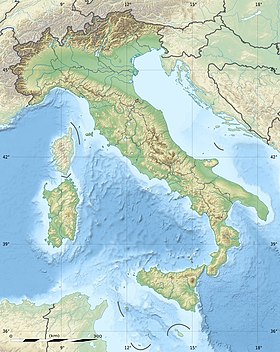| Battle of the Metaurus | |||||||
|---|---|---|---|---|---|---|---|
| Part of the Second Punic War | |||||||
 Roman and Carthaginian battle lines | |||||||
| |||||||
| Belligerents | |||||||
| Roman Republic | Carthage | ||||||
| Commanders and leaders | |||||||
|
Marcus Livius Gaius Claudius Nero Lucius Porcius Licinus | Hasdrubal Barca † | ||||||
| Strength | |||||||
| 37,000 men |
30,000 men 10 elephants | ||||||
| Casualties and losses | |||||||
| 2,000–8,000 killed |
10,000 men killed 5,400 men captured 6 elephants killed 4 elephants captured | ||||||
Location within Italy | |||||||
The Battle of the Metaurus was a pivotal battle in the Second Punic War between Rome and Carthage, fought in 207 BC near the Metauro River in Italy. The Carthaginians were led by Hasdrubal Barca, brother of Hannibal, who was to have brought siege equipment[citation needed] and reinforcements for Hannibal. The Roman armies were led by the consuls Marcus Livius, who was later nicknamed the Salinator, and Gaius Claudius Nero.
Claudius Nero had just fought Hannibal in Grumentum, some hundreds of kilometres south of the Metaurus river, and reached Marcus Livius by a forced march that went unnoticed by both Hannibal and Hasdrubal, so that the Carthaginians suddenly found themselves outnumbered. In the battle, the Romans used their numerical superiority to outflank the Carthaginian army and rout them, the Carthaginians losing 15,400 men killed or captured, including Hasdrubal.
The battle confirmed Roman supremacy over Italy. Without Hasdrubal's army to support him, Hannibal was compelled to evacuate pro-Carthaginian towns in much of southern Italy in the face of Roman pressure and withdraw to Bruttium, where he would remain for the next four years.
